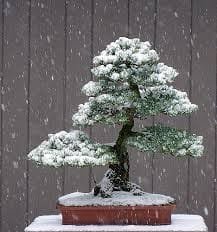Every bonsai grower should know how to manage bonsai during winter time. Proper bonsai storage is a must to avoid ruining all your efforts. The winter season is the perfect time for your bonsai to rest. In this post, you’ll learn more about how to protect your bonsai during cold climate or winter time using effective methods. Let’s get started!
Types of Bonsais
There are four types of bonsai depending on the cold hardiness: tropical, semi-tropical, temperate and hard.
The tropical is the kind of bonsai that must be protected from freezing. This type of bonsai is best for an indoor grow during winter. The semi-tropical kind of bonsai tree can withstand moderate frost and cooler temperature for a short period of time.
The temperate kind of bonsai tree can withstand frozen temperature without causing any damage to the roots while the hard type of bonsai can withstand extreme cold without causing physical and secular damage.
Tips In Growing Bonsai During Winter
Tip #1
It is advisable to cover your bonsais with plastic over a cloth or newspaper wrap around the exterior of the bonsai. Exposure to direct plastic effectively conducts temperature or promotes heat. As soon as the sun rises, remove the cloth and the plastic immediately to avoid leaves from getting burned.

Image Credit: Mommysavers
Tip #2
When growing bonsais indoors during winter, grow lights are important to achieve its maximum growth but it is advisable to place the bonsai near the window so that it can still get sunlight and so as not to expose it to too much UV rays from the grow lights.
Tip #3
It is important to know what kind of bonsai specie that you are growing to know if you should place it indoors or outdoors during winter. If you are growing a tropical type of bonsai specie, move it indoors or in a greenhouse since it expects warm temperature.
Tip #4
When growing outdoors, make sure to observe proper watering. Remember that your bonsai doesn’t need much water during the dormancy period. Only water your bonsai when the soil dries out.
Tip #5
When bonsais are placed on top of the bench, cover the sides of the bench with bubble wraps to serve as a protection from cold temperature and possible hails stones.
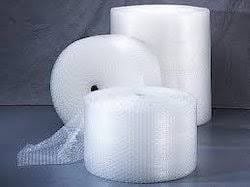
Image Credit: Indiamart
Tip #6
It is advisable to take the bonsai out from its original container or pot and directly plant it in the soil in your garden. This will give the roots maximum protection since then it is completely covered with soil.
Tip #7
If you do not have space in your garden to directly plant the bonsai, just transfer it to a larger pot preferably a wooden box-type pot filled with garden soil. Make sure that the roots are situated 2-3 inches from on top of the ground.
Tip #8
The dormancy period is the perfect time for you to check if your bonsai is already infested with the pest for early detection and treatment.
Tip #9
Once the bonsai has already shed its leaves, all its stored sugar is sent to the roots. That’s why the most important part of growing bonsai is to take extra care for the roots.
How To Prepare The Bonsai Tree For Winter
Before Winter
During the dry and warm part of the year, starting May to Mid November, it is advisable to place the bonsai tree outside to get an optimum sunlight exposure needed for growth before experiencing the dormancy period.
Let the bonsai adequately prepare for its dormancy period during the winter by fertilizing it only until August. Avoid pruning the parts of the bonsai at least two months before winter because it may not have enough time to recover making the bonsai very weak.
During Winter
During the dormancy period, you may transfer the outdoor bonsai trees to a cool, dark location that is unheated. If your bonsai tree is a hard species then you may leave it outside as long as it has adequate protection.
When growing indoors, it is not necessary to provide light for as long as the storage temperature is between 20 to 50 degrees Fahrenheit or (-6-+10 degrees Celsius).
If your bonsai tree is planted in a shallow pot protect the roots by ensuring that there is enough soil to cover it or better yet transfer it to a larger pot.
Allow your bonsai tree experience the early freeze to trigger its cold hardiness mechanism just make sure that the temperature won’t drop at 35 degrees Fahrenheit. If the temperature is at this point begin with your cold protection strategies.
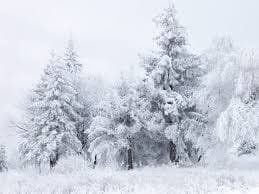
Image Credit: Wikipedia
If you don’t want to leave your bonsai outdoors, you may refrigerate it to give it’s required dormant period but place it in an indoor environment in late winter to prepare for the spring period. The ideal temperature in the refrigerator for bonsai storage is between 35 to 40 degrees Fahrenheit.
After Winter
When there are no signs of intense cold that may damage the roots, you may repot your bonsai most especially if you placed it directly in the soil in your garden or if you want to transfer it to a normal size of the pot.
Conducting pruning for structuring and maintenance is also conducted to bring back the natural beauty of your bonsai.
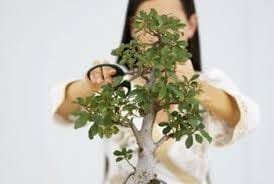
Image Credit: Homeguide Sfgate
Best Type of Trees for Winter
These types of bonsai species are highly resistant to extreme weather conditions because it can survive up to -45 degrees Celsius. Most of these bonsai species should be planted outdoors because it favors cold weather conditions.
- Cedar
- Elms
- Pine
- Spruce
- Larch
- Birch
- Cypress
- Maples
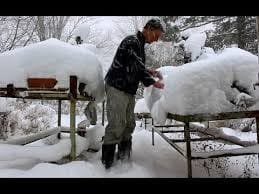
Image Credit: YouTube
Conclusion
Proper knowledge on how to take good care of your bonsai during winter is essential. Even though you are growing a hard specie, it will still require special care. Bonsais are versatile because they can still be grown outdoors or indoors depending on what measures you are going to take to protect it during harsh conditions, most especially during winter.
